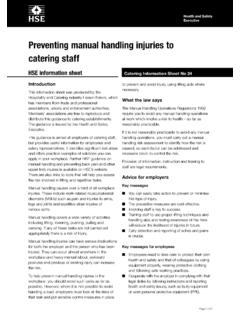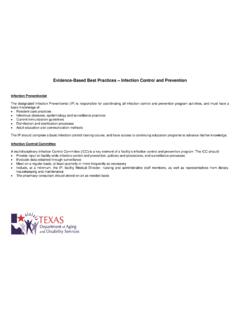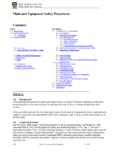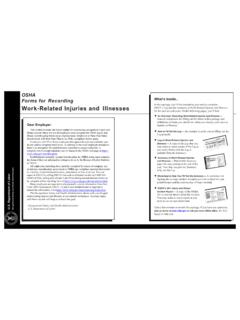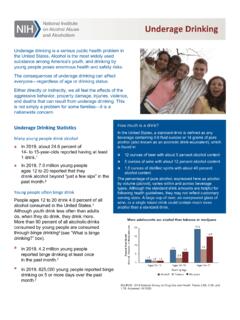Transcription of MOH Pocket Manual in Emergency
1 MOH Pocket Manual in Emergency MOH Pocket Manual in Emergency3cardiac emergencyCOntents4 MOH Pocket Manual in EmergencycontentContentsChapter 1: Cardiac Emergency : Acute ST Elevation Myocardial Infarction1 . Non ST Elevation Myocardial Infarction. Atrial fibrillation. Bradydysrhythmias. Hypertension.
2 Acute Aortic Syndromes. Deep Venous Thrombosis. Chapter 2: Pulmonary Emergency : Acute bronchial Asthma.
3 Chapter 3 : Neurological Emergency : Headache. Adult Acute Bacterial Meningitis. Chapter 4 :Toxicology: Acetaminophen (Paracetamol, APAP) Overdose.
4 Carbon Monoxide Poisoning. Chapter 5 : Hematological Emergency : Sickle cell disease in Emergency department. Anticoagulation Emergencies. Chapter 6 : Endocrinology and electrolyte Emergency : Hypokalemic and Hyperkalemia Emergencies.
5 Diabetic Emergency . MOH Pocket Manual in Emergency5content Thyroid Storm and Myxedema Coma Chapter 7 : Urological Emergency : Rhabdomyolysis. Acute Urinary Retention.
6 Chapter 8 : Trauma and environmental: Severe Traumatic Brain Injury. Electrical Injuries. Heat injury. Chapter 9.
7 Medications List 6 MOH Pocket Manual in Emergencycardiac emergencyChapterMOH Pocket Manual in Emergency7cardiac emergencyChapterCRADIAC Emergency 18 MOH Pocket Manual in Emergencycardiac emergencyAcute ST Elevation and NonST Elevation Myocardial InfarctionOverviewAcute coronary syndrome involves:1. ST elevation acute myocardial infarction2. Non ST-segment elevation acute myocardial infarction3.
8 Unstable angina (UA).Acute ST elevation myocardial infarction typically occurs when a clot leads to complete occlusion of a coronary artery with trans mural , or full thickness myocardial infarction .The ECG will show ST segment elevation in the involved area of the ST-segment elevation acute coronary syndromes (NSTE-ACS) refers to a disease process characterized by reduced coronary blood flow resulting in coronary ischemia without ST-segment elevations on an electrocardiogram (ECG).NSTE-ACS include both non ST-segment elevation acute myo-cardial infarction (MI), as defined by positive biomarkers for MI, and unstable angina (UA), as defined by negative Pocket Manual in Emergency9cardiac emergencyClinical Presentationo History Chest pain, when it started, what it feels like (stabbing, crushing, pressure, aching), and if it radiates to other parts of the body.
9 Jaw/shoulder/ neck/arm pain. Dizziness, nausea. Shortness of Physical Examination Hemodynamic stability, signs of heart fail-ure/left ventricular dysfunction. Exclusion of noncardiac and nonischemic cardiac causes requires a thorough examination of the pa-tient s chest wall including inspection and pal-pation as well as careful examination of cardiac and pulmonary Pocket Manual in Emergencycardiac emergencyDifferential diagnosiso Heart Acute coronary syndrome Pericarditis Myocarditis Endocarditis Valvular disease o Lungs Pulmonary embolus Pneumothorax Pneumonia Empyema Hemothorax COPD o EsophagusEsophagitis GERD Spasm Foreign body Rupture
10 (Boerhaave s) Esophegeal Tearo Work up CBC. Electrolytes. Coagulation studies. Cardiac enzymes. ECG. Cardiac Pocket Manual in Emergency11cardiac emergencyManagement o Prehospital care : Three goals: (1) Delivering patients to an appropriate health care facility as quickly as possible.(2) preventing sudden death and controlling arrhythmias by using acute cardiac life support (ACLS) protocol when necessary.(3) Initiating or continuing management of patients during inter-facility transport.
